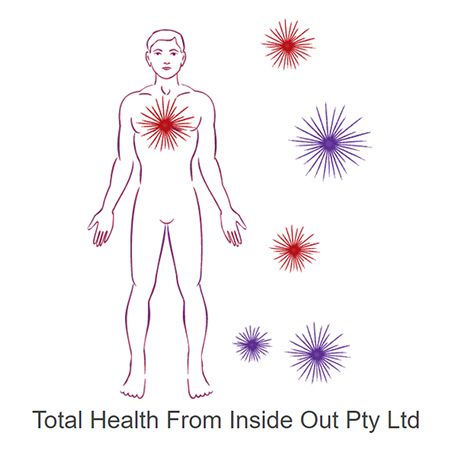
Ever finished a workout and felt that wonderful wave of happiness wash over you? That's not just satisfaction from ticking "exercise" off your to-do list – it's your body's own chemical reward system kicking in. Let's chat about endorphins, those magical mood-boosting molecules that make movement so much more than just a way to stay fit.
What are endorphins?
We've all heard people talk about endorphins when discussing exercise, but what exactly are they? Well, think of endorphins as your body's built-in mood elevators and pain relievers.
When you exercise, your body decreases stress hormones like cortisol while simultaneously releasing several "happiness hormones" – endorphins, serotonin, and dopamine. These chemicals work together like a well-orchestrated band to create that post-exercise glow we all love.
Endorphins are actually produced right in your brain and act as natural painkillers. They're so powerful that they can mask physical discomfort – which explains why you might not notice a minor injury until after you've finished your workout. That euphoric feeling runners often describe as a "runner's high"? That's your endorphins throwing a little party in your brain!
Beyond the mood boost, regular exercise has been shown to:
- Reduce stress levels
- Improve self-esteem
- Enhance sleep quality
- Speed recovery from mild depression
In fact, research from the Black Dog Institute in Australia shows just one hour of exercise each week can prevent depression, highlighting the strong connection between physical activity and mental wellbeing.
Movement menu: exercises that get those endorphins flowing
The good news? You don't need to be an elite athlete to enjoy an endorphin rush. There's a whole buffet of activities that can trigger these feel-good chemicals:
Cardio champions
Love it or loathe it, cardiovascular exercise is perhaps the most reliable endorphin producer. Running, cycling, swimming, or even a brisk walk around your neighbourhood can get those endorphins flooding your system. Ever notice how even a quick 10-minute walk can clear your head when you're feeling stressed? That's your endorphins at work!
Strength training superstars
Contrary to what some might think, it's not just cardio that gives you that endorphin high. Research published in the Journal of Physical Activity & Health has shown that resistance training and weightlifting are excellent endorphin boosters too. There's something uniquely satisfying about completing that challenging set of squats or finally managing an unassisted pull-up.
Mind-body magic
Practices like yoga and Pilates combine movement with mindfulness, creating a double-whammy effect for your mental wellbeing. The controlled breathing techniques used in these practices enhance the endorphin response while also activating your parasympathetic nervous system—that's the "rest and digest" mode that counteracts stress.
Group fitness fun
There's a reason group fitness classes remain so popular—they combine the endorphin rush of exercise with the social connection our brains crave. Whether it's a dance class that makes you forget you're even exercising or team sports that add an element of play, exercising with others can amplify your endorphin response.
With all these wonderful endorphin-boosting exercises at your disposal, you might be wondering how these feel-good chemicals actually work in your body. Let's take a closer look at the fascinating science behind your exercise high.
If you're looking for a high-intensity endorphin boost that combines strength, cardio, and stress relief all in one, don't miss our guide to boxing as exercise – it might just be the perfect addition to your mood-boosting fitness routine!
The science behind your exercise high
Let's get a bit nerdy for a moment (in a fun way, I promise). The science behind endorphins is actually quite fascinating.
When you engage in physical activity, your body perceives this as a form of stress or discomfort. To counteract this, your brain releases endorphins that bind to specific receptors – the same ones that respond to pain medications. This is why endorphins effectively reduce your perception of pain and discomfort during exercise.
A study published in the Journal of Experimental Biology found that after just 30 minutes of moderate-intensity running, participants not only reported feeling happier but brain scans actually showed higher levels of endorphins circulating in their brains. Similarly, research from the Baker Heart and Diabetes Institute in Melbourne demonstrated that regular cycling sessions increased endorphin levels and reduced pain perception.
Interestingly, the intensity of your workout seems to matter. While any movement is beneficial, moderate to high-intensity workouts appear to trigger a more significant endorphin release. That said, even gentle exercise still provides mood-boosting benefits – so there's no need to push yourself to exhaustion if that's not your cup of tea.
Natural pain relief (no prescription required)
Have you ever heard someone say they exercise to manage chronic pain and thought it sounded counterintuitive? There's actually solid science behind this approach.
Endorphins act as your body's own painkillers by interacting with the opioid receptors in your brain – the same receptors targeted by pain medications. When endorphins bind to these receptors, they reduce the perception of pain, creating a natural analgesic effect.
With regular exercise, you might find your overall pain tolerance improves over time.
How long should you exercise to feel the benefits?
Here's some good news for the time-poor among us: you don't need to spend hours at the gym to reap the mood-boosting rewards of exercise. Even just 10 minutes of moderate activity is enough to improve your mood, increase energy, and decrease fatigue.
That said, for the full spectrum of exercise benefits – not just the endorphin boost – aim for at least 30 minutes of moderate exercise daily. This aligns with Australia's physical activity guidelines, which recommend 150-300 minutes of moderate intensity physical activity each week.
Remember though, something is always better than nothing! On busy days when a full workout seems impossible, even a short walk can give your brain a welcome endorphin refresh.
For those days when you need gentle endorphin release or want to enhance your mind-body connection, try these 5 breathing exercises for relaxation – they're perfect for complementing your active workouts with mindful recovery.
Building Your Endorphin-Boosting Routine
Creating an exercise habit that sticks can be challenging, but with the right approach, you can develop a sustainable routine that keeps those endorphins flowing regularly. Here are some friendly tips:
- Start where you are, not where you think you should be: Be realistic about your current fitness level and schedule. Beginning with manageable activities builds confidence and prevents discouragement.
- Find your exercise "why": Beyond vague goals like "getting fit," identify the emotional drivers behind your desire to exercise. Maybe it's having more energy to play with your kids, managing work stress better, or simply enjoying that post-exercise feeling of accomplishment.
- Make it enjoyable (or at least not dreadful): Exercise doesn't have to be punishment! Experiment until you find activities you genuinely like, or at least don't mind. For me, adding a great podcast to my walks transformed them from a chore to a treat I look forward to.
- Build in accountability: Whether it's a standing date with a walking buddy, a booked class you've paid for, or even just telling someone your plans, external accountability helps tremendously on days when motivation is low.
- Track your mood, not just your metrics: Instead of focusing solely on distance, speed or weight lifted, pay attention to how different types of movement affect your mood. This awareness can help you reach for the right type of exercise when you need a specific mental boost.
- Be flexible and forgiving: Life happens! When you inevitably miss a planned session, treat yourself with the same kindness you'd offer a friend. Tomorrow is always a fresh opportunity.
With these practical tips for building a sustainable exercise routine, you've got everything you need to create an endorphin-boosting habit that lasts. Remember that consistency matters more than perfection, and every bit of movement counts toward your mental wellbeing.
Wrapping up
Think of exercise as self-care instead of a chore. This simple mindset shift makes movement something to enjoy rather than endure. Endorphin-boosting workouts don't just improve your physical health—they create the perfect chemical environment for your brain to thrive in our stressful world.
Feeling low, stressed or off-colour? Move your body in whatever way feels good. Your endorphins are standing by, ready to flood your system with mood-lifting magic. Whether it's yoga, swimming or running, each activity supports your mental health with every movement.
Isn't this a better way to view exercise? Not as punishment for what you ate or another task on your to-do list, but as a reliable way to give your brain exactly what it needs to help you feel your best.
Ready to experience your own endorphin revolution? Find an exercise physiologist near you who can design a personalised program that makes your brain as happy as your body. Your natural happiness chemicals are just one workout away!
Originally published on May 12, 2025








